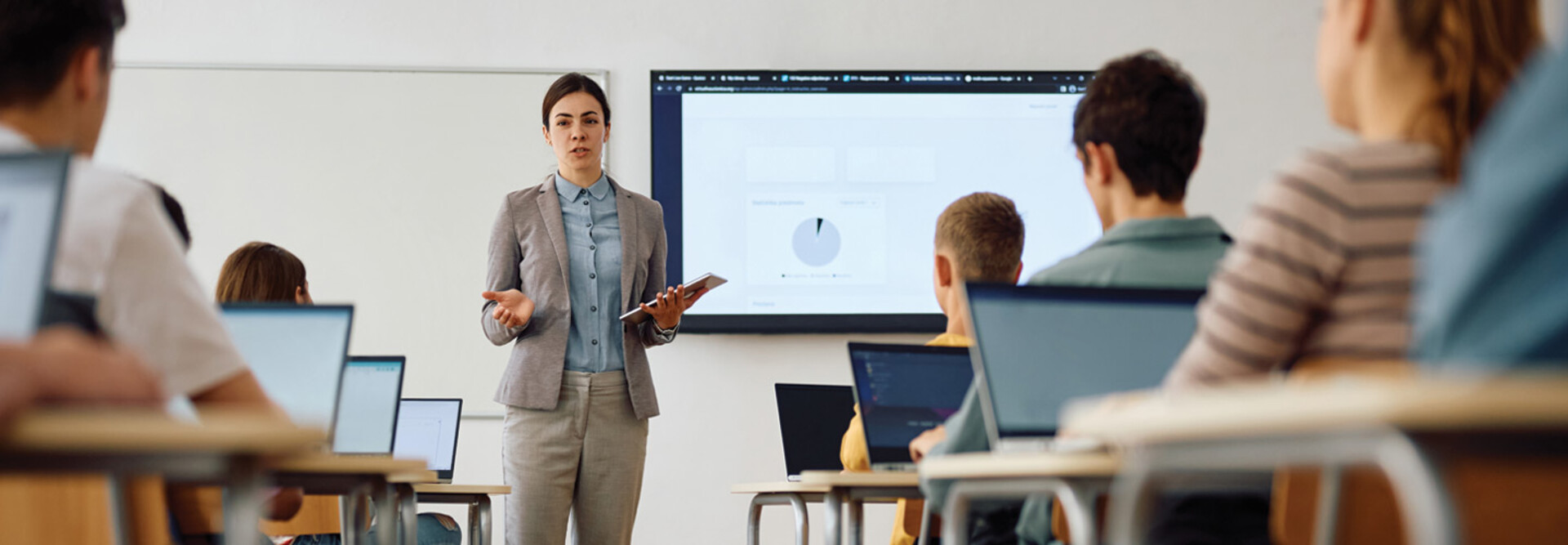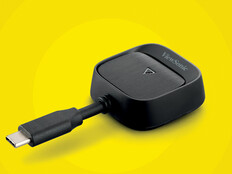Further advancements increase accessibility for listeners. One such innovation, live language translation, supports improved learning for students and the larger school community.
Language Translation in Real Time
Although some platforms have had translation features within closed captions, updates to translation technology can bridge understanding more immediately. Audio Enhancements, an audiovisual technology vendor, has introduced the option for live language translation that feeds directly to student devices.
By logging in to the website with a classroom code from their teacher, students can choose their preferred language and have their teacher’s spoken words appear in that language on the screen. Outside of providing the code — and ensuring students don’t have any trouble accessing the site — all the teacher needs to do is speak into the specialized microphone to broadcast the translated audio to the devices. Artificial intelligence does the rest.
This feature is largely being used in ESL classrooms, but it has applications for parent-teacher conferences and larger assemblies of community members, such as school board meetings.
RELATED: These technologies can strengthen parent-teacher communications.
Dual-language positions are often difficult to fill in a K–12 district. While there is no data on the nationwide number of bilingual educators or unfilled roles, the Office of English Language Acquisition found that the national high school graduation rate for English learners was 15% lower than the rate for all students. Bringing more effective communication tools to the classroom could be one way for schools to offset that gap.
While these tools can’t replace one-to-one teacher’s aids in classrooms, they do give schools the ability to scale accessibility in larger forums.
Thoughtful Plans for New School Audio Systems
Adding these new audio technologies isn’t a simple rip-and-replace of the cabling and infrastructure in a school building. Because of the integration with schools’ other systems, audio tech may require more complicated configuration and setup.
IT professionals planning these upgrades should be sure to work with other stakeholders, including maintenance and facilities staff; superintendents, principals and other administrators; school resource officers; curriculum leadership; and representatives from any other departments that may be affected.
READ MORE: K–12 leaders ignite change and lean into digital transformation.
The installation of these audio systems is more complex than it used to be, and the projects themselves can be difficult to navigate, depending on a school’s existing infrastructure. CDW has configuration and installation experts who can help schools with every step of the process, from planning to flipping the on switch.







![[title]Connect IT: Bridging the Gap Between Education and Technology](http://www.edtechmagazine.com/k12/sites/default/files/articles/2014/05/connectit.jpg)




